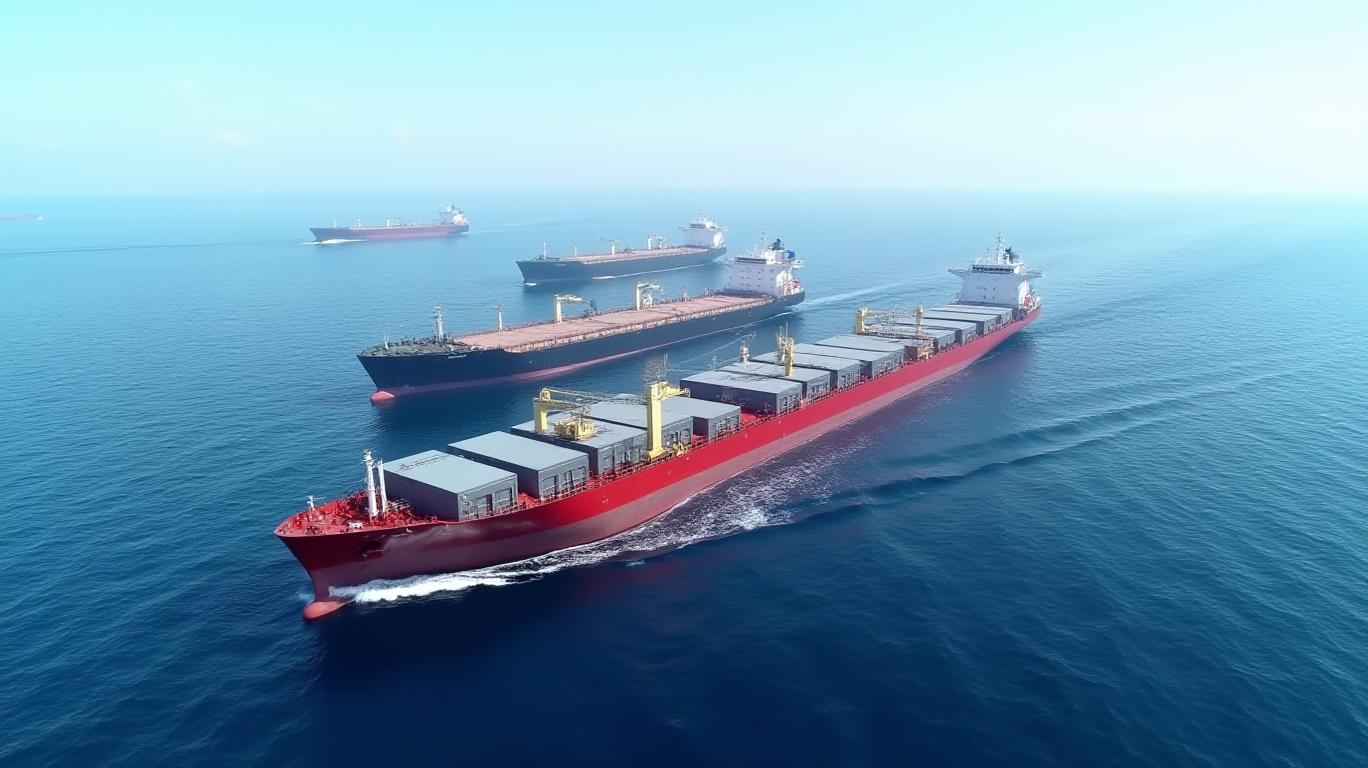Navigating Churning Seas: Klaveness Combination Carriers ASA's Q1 2025 Results Highlight Resilience Amid Headwinds
Klaveness Combination Carriers ASA (FRA:36K) has long been a symbol of adaptability in the shipping industry, leveraging its fleet of versatile combination carriers to navigate volatile markets. The company’s Q1 2025 earnings, however, reveal a complex interplay of challenges and opportunities. While financial metrics dipped from the prior quarter, strategic initiatives and operational agility underscore Klaveness’s ability to weather short-term headwinds. Here’s what investors need to know.
A Mixed Q1, But Beneath the Surface Lies Strength
KCC reported an EBITDA of USD 15.0 million, down from USD 20.2 million in Q4 2024, with Earnings Before Tax (EBT) falling to USD 4.3 million from USD 8.6 million. These declines reflect a combination of softer market conditions and operational adjustments. The dry bulk segment, particularly in the Pacific, saw reduced demand, while geopolitical tensions—most notably the U.S. Trade Representative (USTR) port fee dispute—temporarily disrupted trade flows.
Yet, Klaveness’s combination carriers, which can switch between dry bulk and tanker modes, continued to outperform market benchmarks. CABU vessels (dry bulk-focused) earned 1.2x the average tanker rates, while CLEANBU vessels (product tanker-focused) delivered 2.7x the earnings of standard dry bulk ships. This flexibility is a key differentiator in an industry where trade imbalances and commodity cycles often favor specialized operators.

Operational Resilience and Strategic Priorities
- Fleet Performance and Optimization:
- CABU TCE dropped to USD 22,346/day (from USD 28,988/day in Q4 2024), driven by reduced wet-mode trading and Pacific dry bulk weakness. However, KCC pivoted to higher-margin cargoes like chemical/petroleum products (CPP) and South American vegetable oils, maintaining profitability.
CLEANBU TCE fell to USD 22,449/day (from USD 28,027/day), but the company prioritized chemical and product tanker shipments, avoiding lower-margin dry bulk.
Dividend Discipline:
Despite the earnings dip, KCC maintained its dividend policy, distributing USD 0.035 per share (USD 2.1 million total), or 135% of Adjusted Cash Flow to Equity (ACFE). This exceeds the minimum 80% threshold, signaling confidence in cash flow stability.
Fleet Expansion and Modernization:
- Steel cutting for two of three newbuild combination carriers was completed in Q1 2025, with deliveries expected by mid-2026. These additions will bolster capacity, enabling KCC to capitalize on market shifts without over-leveraging.
- The company also began phasing out older vessels, with the first (the Barcelona, built in 2001) to be retired by early 2026. This aligns with a broader strategy to modernize its fleet and meet 2050 carbon neutrality targets, with current EOI metrics at 6.3—well within regulatory thresholds.
Looking Ahead: Q2 Guidance and Risks
KCC’s Q2 2025 TCE guidance signals optimism:
- CABU vessels: USD 24,000–25,000/day, reflecting improved Pacific dry bulk conditions and operational efficiency gains.
- CLEANBU vessels: USD 21,500–23,500/day, tempered by lingering U.S. regulatory uncertainty.
The USTR port fee dispute remains a wildcard. While operations resumed post-April 2025 revisions, KCC is preparing contingency plans to adjust capacity if finalized rules harm profitability. Geopolitical risks, including supply chain bottlenecks and energy market dynamics, could further test resilience.
Conclusion: A Long-Term Play on Flexibility and Diversification
Klaveness Combination Carriers ASA’s Q1 2025 results are a reminder that shipping is a cyclical industry, prone to external shocks. Yet, the company’s focus on operational agility, disciplined capital allocation, and fleet modernization positions it to outperform peers in the long run.
Key takeaways for investors:
- Short-term dip, long-term strength: The EBITDA decline reflects transitory factors, not structural weakness. With newbuilds coming online and markets stabilizing, KCC is poised for a rebound.
- Dividend stability: The 135% payout ratio to ACFE highlights cash flow predictability, even in challenging quarters.
- Sustainability integration: Meeting carbon targets while maintaining profitability underscores the company’s commitment to ESG, a critical factor for institutional investors.
While geopolitical risks and market volatility linger, Klaveness’s unique business model—combining dry bulk and tanker flexibility—gives it an edge in an industry where specialization and adaptability are paramount. For investors willing to look past the Q1 turbulence, the company remains a compelling play on global trade resilience.
Final verdict: Hold for now, but keep an eye on Q2 execution and regulatory clarity. The fundamentals are there for a strong recovery.

Comments
No comments yet